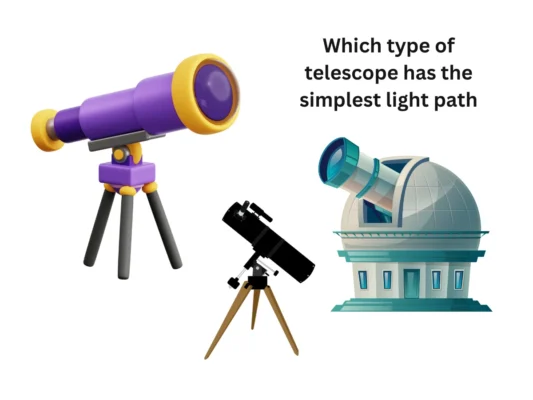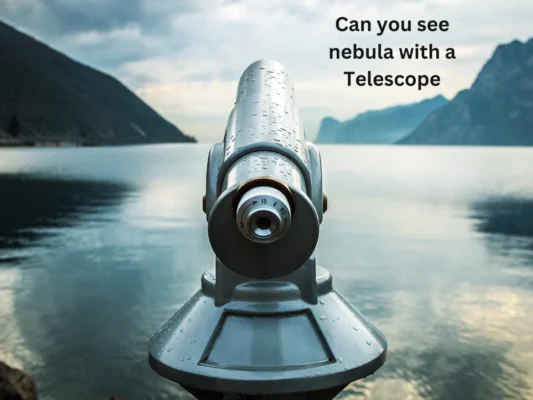As astronomy enthusiasts, we know the excitement of stargazing and the desire to explore the celestial wonders above. However, sometimes we face challenges, such as difficulty seeing through our telescopes. This can be frustrating and leave us wondering what could be the cause. In this article, we will explore some of the common reasons why you can’t see through your telescope, and provide some tips to help you improve your stargazing experience.
Following are the common reasons why you can’t see through your telescope
Poor Quality Telescope
One of the most common reasons why you might be having difficulty seeing through your telescope is that it is of poor quality. If your telescope is not well-made or is of low quality, it may not provide the clear and sharp images that you are looking for. In this case, upgrading to a better-quality telescope may be the solution to your problem.
Dirty or Misaligned Optics
Another common reason why you might be having difficulty seeing through your telescope is that the optics are dirty or misaligned. Dust, dirt, and other debris can accumulate on the optics over time, which can reduce the clarity and brightness of the images you see. Additionally, if the optics are not aligned properly, the images may appear blurry or distorted. Cleaning the optics and realigning them may solve the problem.
Light Pollution
Light pollution is another factor that can affect your ability to see through your telescope. This occurs when artificial lighting from streetlights, buildings, and other sources obscures the view of the night sky. If you live in an area with high levels of light pollution, it may be difficult to see stars and other celestial objects. Consider finding a dark sky location or using a light pollution filter to improve your viewing experience.

Atmospheric Conditions
Atmospheric conditions can also impact your ability to see through your telescope. Factors such as temperature, humidity, and air turbulence can cause the images to appear blurry or distorted. This is known as “seeing,” and it can be difficult to predict or control. However, you can try to minimize the impact of atmospheric conditions by observing during periods of stable weather and avoiding viewing objects close to the horizon.
Inadequate Magnification
In some cases, difficulty seeing through your telescope may be due to inadequate magnification. If you are trying to observe a distant object, such as a planet or galaxy, and the image appears small and dim, you may need to increase the magnification of your telescope. However, be careful not to exceed the maximum useful magnification of your telescope, as this can lead to blurry images.
Lack of Experience
Finally, it’s important to consider the role of experience when it comes to stargazing. If you are new to astronomy, it can take some time to develop the skills and knowledge necessary to observe objects through a telescope successfully. Take the time to learn about the equipment, the night sky, and the objects you are trying to observe. Joining a local astronomy club or taking a course can also help develop your skills and knowledge.
You can check reviews of telescopes here
- Best Dobsonian Telescopes
- Best Computerized telescope
- Best Telescope for Astrophotography
- Best Dobsonian Telescope for beginners
- Best Telescope For Viewing Planets and galaxies
Conclusion
In conclusion, there are many reasons why you might be having difficulty seeing through your telescope, but there are also many solutions. By upgrading your telescope, cleaning and aligning your optics, reducing light pollution, considering atmospheric conditions, using adequate magnification, and developing your skills and knowledge, you can improve your stargazing experience and enjoy the beauty of the night sky.
FAQs
Why can’t I see anything through my telescope?
There could be several reasons why you are not able to see anything through your telescope. It could be due to incorrect alignment, dirty lenses or mirrors, or atmospheric conditions. Check your telescope’s manual for troubleshooting tips.
How do I properly align my telescope?
To properly align your telescope, you will need to use a star chart or a smartphone app that helps you locate stars or planets. Follow the instructions in your telescope’s manual to align the telescope using the star chart or app.
What should I do if my telescope’s lenses or mirrors are dirty?
If your telescope’s lenses or mirrors are dirty, clean them gently with a microfiber cloth or lens cleaning solution. Avoid using regular cleaning cloths or paper towels, as they may scratch the surface of the lens or mirror.
Can I use my telescope during the day?
Yes, you can use your telescope during the day to view distant landscapes or birds. However, you will need a special filter to reduce the brightness of the sun and protect your eyes from damage.
Can I see planets or galaxies through my telescope?
Yes, with the proper alignment and viewing conditions, you can see planets and galaxies through your telescope. Check your telescope’s manual for the recommended viewing conditions and positions.
How do I choose the right telescope for me?
Choosing the right telescope depends on your viewing preferences and budget. Consider factors such as the size of the telescope, the type of mount, and the accessories included. Research different brands and models, and read reviews from other users before making a purchase.
Do I need any special equipment to use my telescope?
In addition to the telescope itself, you may need additional accessories such as eyepieces, filters, and amounts. Check your telescope’s manual or consult with a knowledgeable salesperson to determine which accessories are necessary for your viewing needs.
How do I maintain my telescope?
To maintain your telescope, store it in a dry, cool place when not in use, and cover it with a protective cover. Keep the lenses and mirrors clean, and avoid touching them with your fingers. Check your telescope’s manual for additional maintenance tips.
Can I use my smartphone to take pictures through my telescope?
Yes, you can use a smartphone adapter to attach your phone to the telescope and take pictures of celestial objects. Check your telescope’s manual or consult with a knowledgeable salesperson to determine which adapter is compatible with your phone and telescope.





